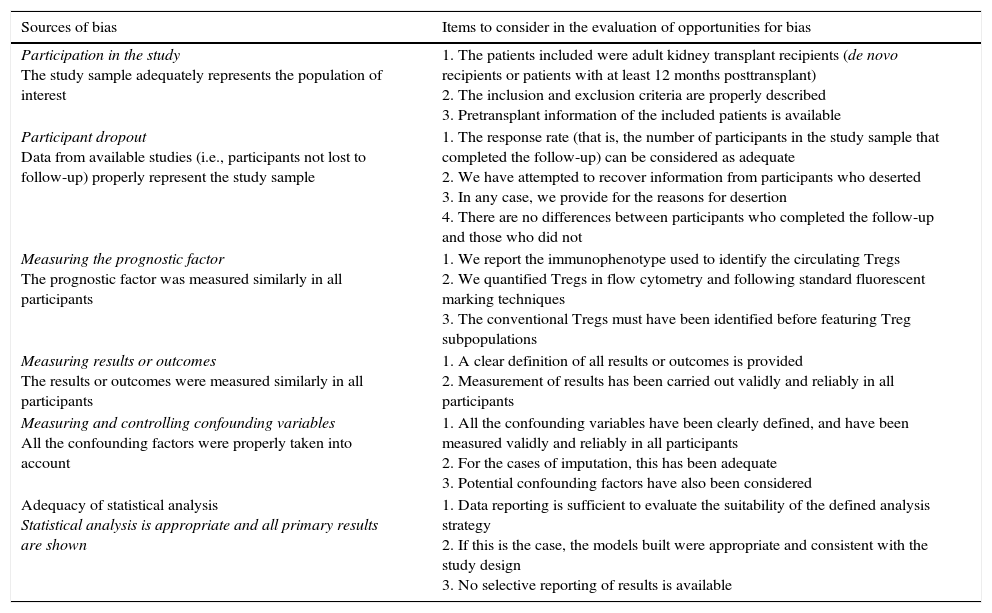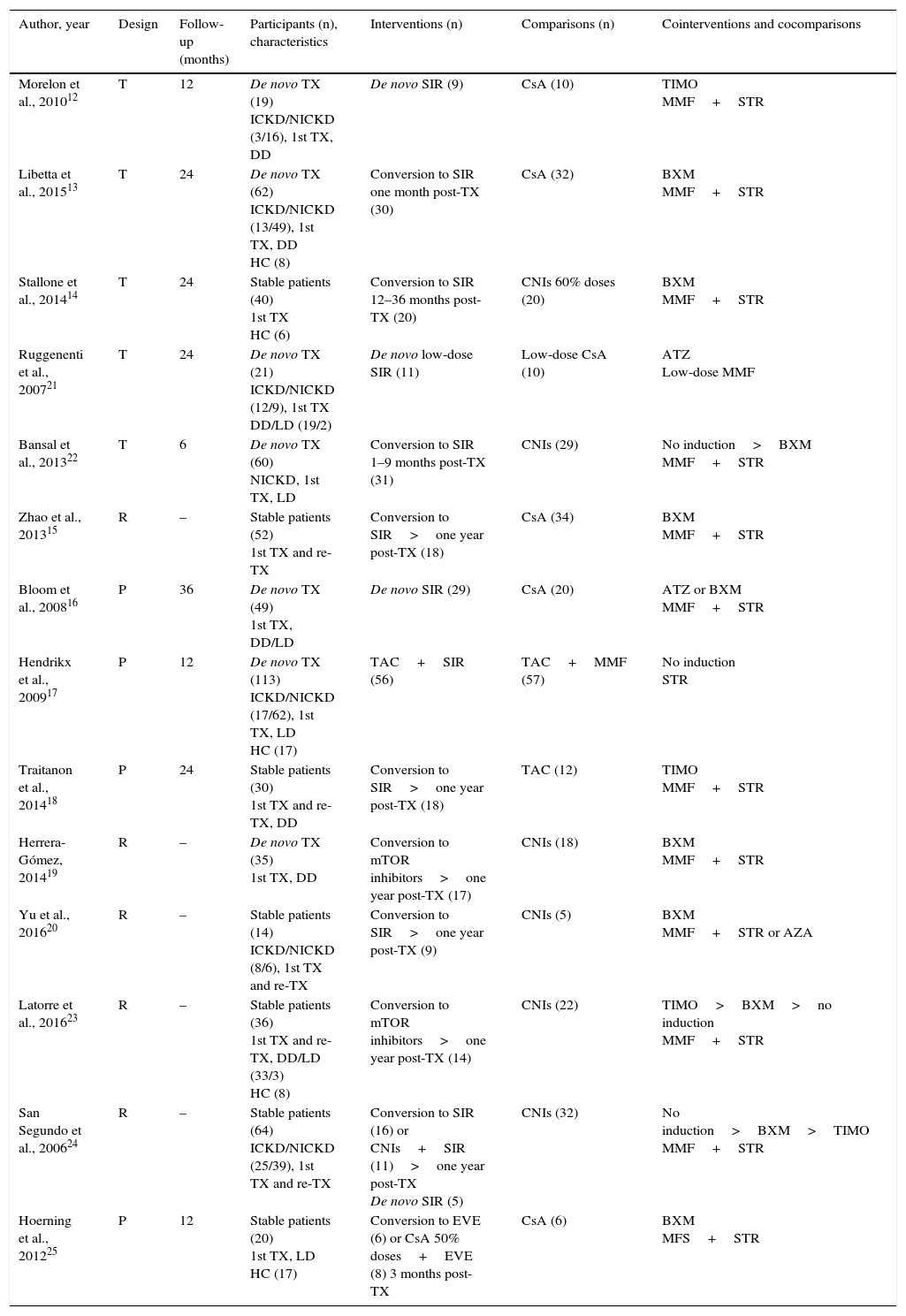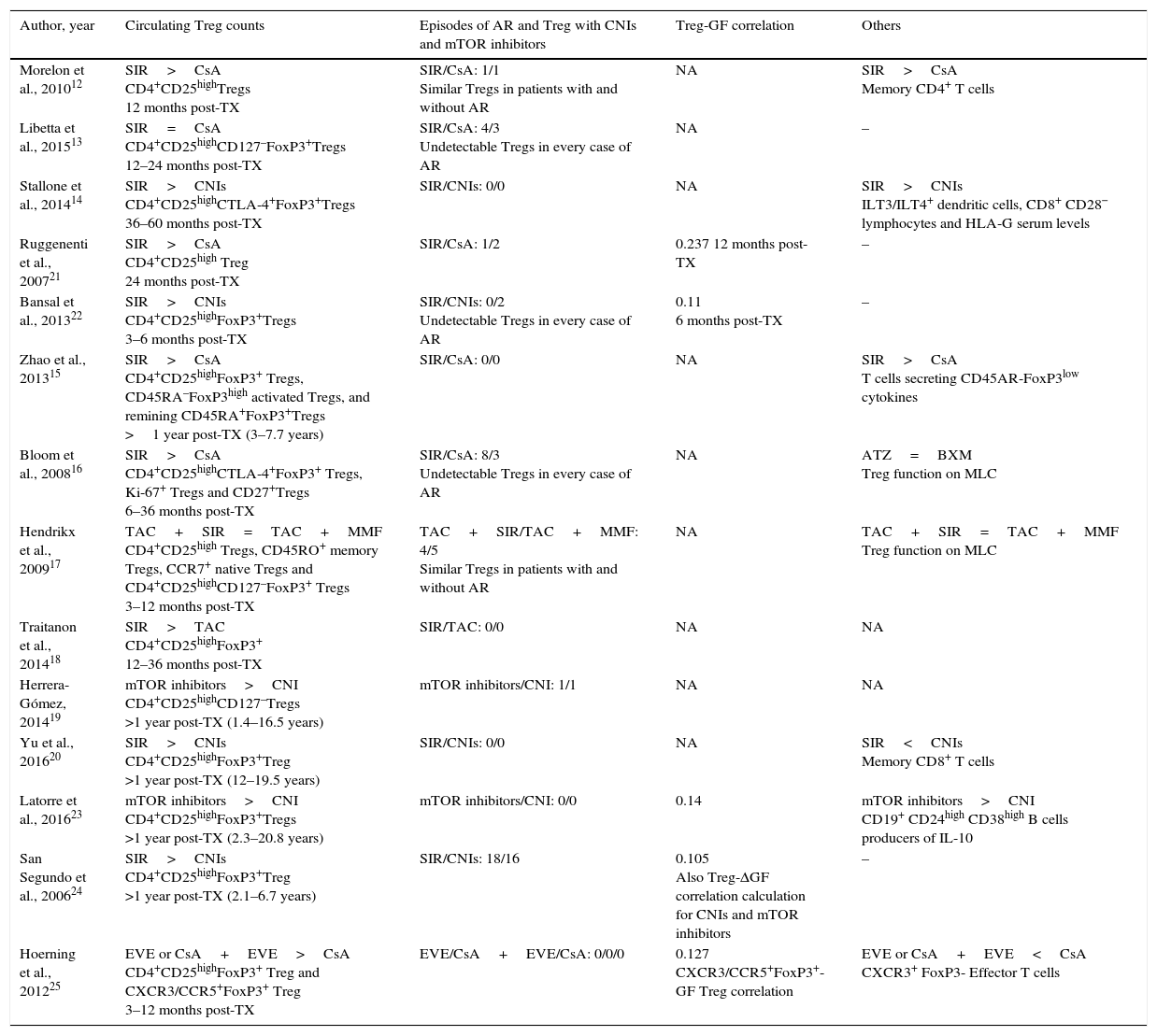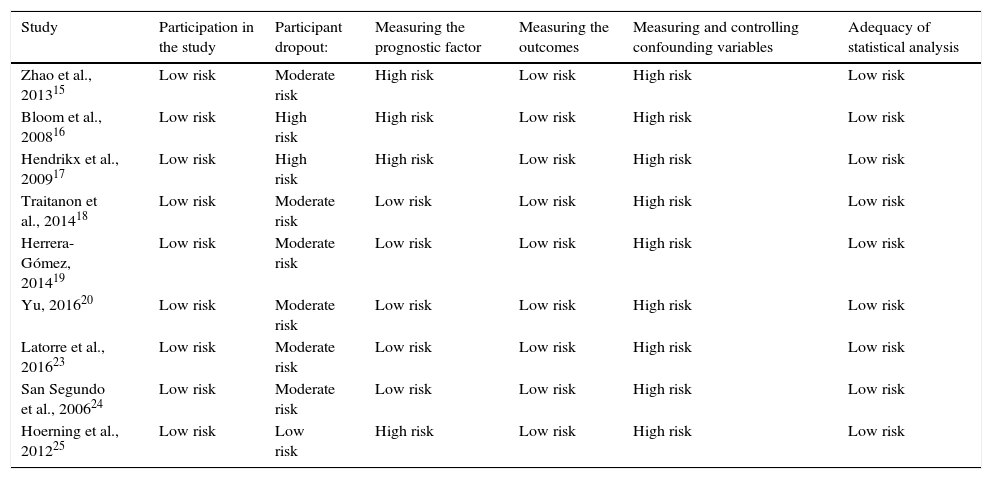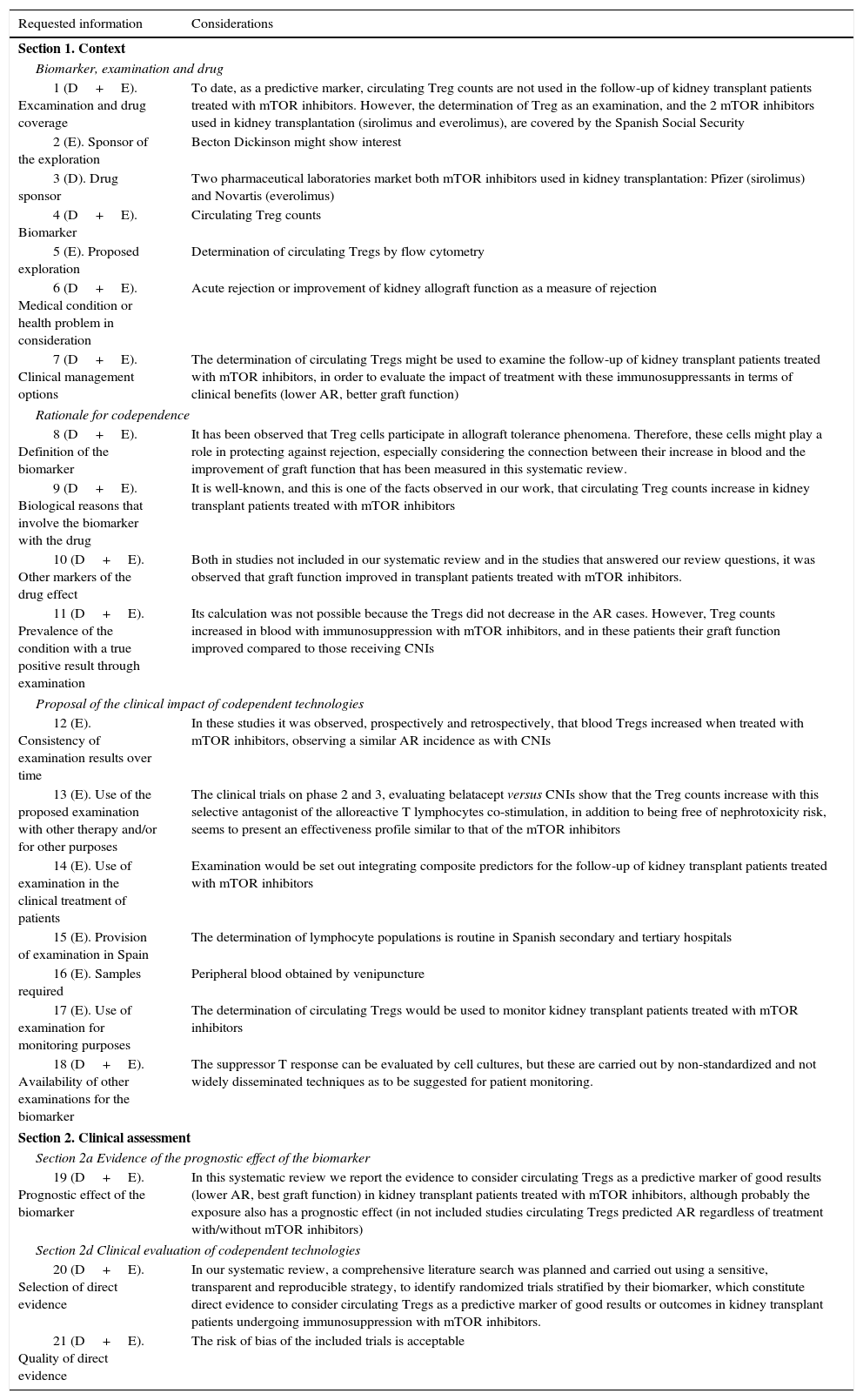Circulating regulatory T cells could become a suitable biomarker for kidney recipients. The objective of this study was to evaluate the effect of mammalian target of rapamycin (mTOR) inhibitors on regulatory T cell numbers, and the clinical interest of this effect.
Material and methodsSystematic review of published and unpublished studies. Worldwide databases or repositories. Randomized controlled trials and cohort studies comparing regulatory T cell counts and rejection episodes between patients with and without mTOR inhibitors were searched. Correlation of regulatory T cells-glomerular filtration rate might be supplied. Co-dependency regulatory T cells-mTOR inhibitors efficacy was evaluated.
ResultsFive trials and 9 studies were included. Clinical differences made it difficult to obtain quantitative estimates of the effect of immunosuppression on regulatory T cell numbers. Nevertheless, we found that there are higher regulatory T cell numbers under treatment with sirolimus or everolimus. Rejection episodes were similar under calcineurin inhibitors and mTOR inhibitors despite different regulatory T cell numbers. Pooled correlation regulatory T cells-glomerular filtration rate was, prospectively 0.114 (95% confidence interval [95% CI] 0.062–0.406), and retrospectively 0.13 (95% CI 0.0–0.361). There is direct evidence although of low level (biomarker-stratified randomization) on the co-dependency regulatory T cells-mTOR inhibitors efficacy.
ConclusionsRegulatory T cells counts may be associated with better outcomes under treatment with mTOR inhibitors (anti-rejection efficacy), considering that there is a relationship between these cells and kidney graft function.
RegistrationPROSPERO (CRD42016046285).
Las células T reguladoras circulantes podrían convertirse en un adecuado biomarcador para los trasplantados renales. El objetivo de este estudio es evaluar el efecto de los inhibidores de la mammalian target of rapamycin (I-mTOR, «diana de rapamicina en células de mamífero») en las células reguladoras, y el interés clínico de este efecto.
Material y métodosRevisión sistemática de trabajos publicados y no publicados. Bases de datos y repositorios del mundo entero. Se buscaron ensayos controlados aleatorizados y estudios de cohortes que compararon recuentos de células reguladoras y episodios de rechazo entre trasplantados tratados con y sin I-mTOR. Los trabajos podían medir la correlación células reguladoras-filtrado glomerular. Se evaluó la codependencia células reguladoras-eficacia de los I-mTOR.
ResultadosSe incluyeron 5 ensayos y 9 estudios. Las diferencias clínicas no permitieron una estimación cuantitativa del efecto de la inmunosupresión en el número de células reguladoras. Sin embargo, observamos que hay más células reguladoras con sirolimus o everolimus. El número de episodios de rechazo fue similar con anticalcineurínicos que con I-mTOR, a pesar de las diferencias en el número de células reguladoras. La correlación combinada células reguladoras-filtrado glomerular fue prospectivamente de 0,114, con un intervalo de confianza al 95% (IC 95%) de 0,062–0,406, y retrospectivamente, de 0,13 (IC 95% 0,0-0,361). Existen pruebas directas, aunque de bajo nivel (aleatorización estratificada por el biomarcador), respecto a la codependencia células reguladoras-eficacia de los I-mTOR.
ConclusiónEl número de células reguladoras puede asociarse a buenos resultados o desenlaces en los tratados con I-mTOR (eficacia antirrechazo), considerando la relación entre estas células y la función del injerto.
RegistroPROSPERO (CRD42016046285).










